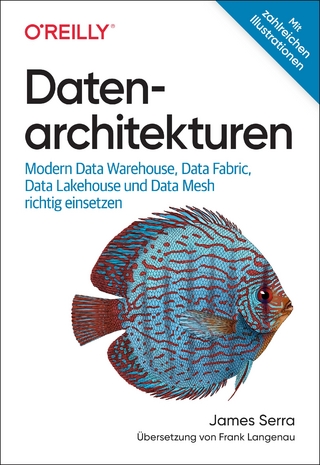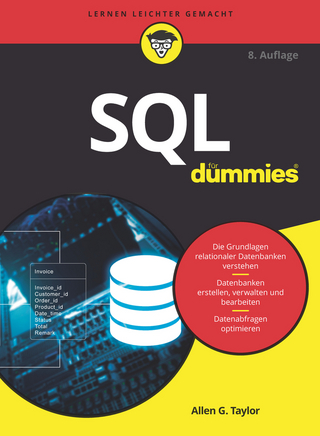![Bild vergrößern Computer Networks [PEARSON CHANNEL] - Andrew Tanenbaum, Nick Feamster, David Wetherall](/media/105765934)
Computer Networks [PEARSON CHANNEL]
Pearson Education (US) (Verlag)
978-0-13-540800-1 (ISBN)
An introduction to computer networking grounded in real-world examples
In Computer Networks, Tanenbaum et al. explain how networks work from the inside out. They start with the physical layer of networking, computer hardware and transmission systems, then work their way up to network applications. Each chapter follows a consistent approach: The book presents key principles, then illustrates them utilizing real-world example networks that run through the entire book — the Internet, and wireless networks, including Wireless LANs, broadband wireless, and Bluetooth. The 6th Edition is updated throughout to reflect the most current technologies, and the chapter on network security is rewritten to focus on modern security principles and actions.
Tutorial videos on key networking topics and techniques are available to students on the companion website.
Instructors are supported with a Solutions Manual to end-of-chapter exercises featured in the book, Lecture PowerPoint slides, and extracted art and figures featured in the book.
Andrew S. Tanenbaum is a Professor of Computer Science at Vrije Universiteteit, Amsterdam, the Netherlands. He is a fellow of IEEE and ACM and a member of the Netherlands Royal Academy of Arts and Sciences. He recently won a prestigious European Research Council Advanced Grant of 2.5 million to do research on highly reliable computer systems. Tanenbaum has also authored or coauthored the following titles: Structured Computer Organization, Fifth Edition; Operating Systems: Design and Implementation, Third Edition; and Distributed Systems: Principles and Paradigms, Second Edition, all published by Prentice Hall. David J. Wetherall is a Professor of Computer Science and Engineering at the University of Washington in Seattle. He hails from Australia and has worked in the area of networking for the past two decades. His research is focused on Internet protocols, wireless networks, and security. Wetherall's work has been recognized with a Sloan Fellowship, the IEEE Bennett Prize, and the ACM SIGCOMM Test-of-Time Award. Nick Feamster is Neubauer Professor of Computer Science and the Director of Center for Data and Computing (CDAC) at the University of Chicago. His research focuses on many aspects of computer networking and networked systems, with a focus on network operations, network security, and censorship-resistant communication systems. He received his Ph.D. in Computer science from MIT in 2005, and his S.B. and M.Eng. degrees in Electrical Engineering and Computer Science from MIT in 2000 and 2001, respectively. He was an early-stage employee at Looksmart (acquired by AltaVista), where he wrote the company's first web crawler; and at Damballa, where he helped design the company's first botnet-detection algorithm. Nick is an ACM Fellow. He received the Presidential Early Career Award for Scientists and Engineers (PECASE) for his contributions to data-driven approaches to network security. His early work in Software Defined Networking won the USENIX Test of Time Award for its influence on Software Defined Networking; he created the first online course on this topic and was also one of the first instructors in Georgia Tech's online Masters in Computer Science program. Nick is an avid distance runner, having completed 20 marathons, including Boston, New York, and Chicago.
1. Introduction
Uses of Computer Networks
Types of Computer Networks
Network Technology, from Local to Global
Examples of Networks
Network Protocols
Reference Models
Standardization
Policy, Legal, and Social Issues
Metric Units
Outline of the Rest of the Book
Summary
2. The Physical Layer
Guided Transmission Media
Wireless Transmission
Using the Spectrum for Transmission
From Waveforms to Bits
The Public Switched Telephone Network
Cellular Networks
Cable Networks
Communication Satellites
Comparing Different Access Networks
Policy at the Physical Layer
Summary
3. The Data Link Layer
Data Link Layer Design Issues
Error Detection and Correction
Elementary Data Link Protocols
Improving Efficiency
Data Link Protocols in Practice
Summary
4. The Medium Access Control Sublayer
The Channel Allocation Problem
Multiple Access Protocols
Ethernet
Wireless LANs
Bluetooth
DOCSIS
Data Link Layer Switching
Summary
5. The Network Layer
Network Layer Design Issues
Routing Algorithms in a Single Network
Traffic Management at the Network Layer
Quality of Service and Application QoE
Internetworking
Software Defined Networking
The Network Layer in the Internet
Policy at the Network layer
Summary
6. The Transport Layer
The Transport Service
Elements of Transport Protocols
Congestion Control
The Internet Transport Protocols: UDP
The Internet Transport Protocols: TCP, QUIC, BBR
Performance Monitoring
Delay-Tolerant Networking
Summary
7. The Application Layer
DNS — The Domain Name System
Electronic Mail
The World Wide Web
HTTP/2
Streaming Audio and Video
Content Delivery Networks and Distributed Cloud Services
Summary
8. Security
Fundamentals of Network Security
The Core Ingredients of an Attack
Firewalls and Intrusion Detection Systems
Cryptography
Symmetric-Key Algorithms
Public-Key Algorithms
Digital Signatures
Management of Public Keys
Authentication Protocols
Communication Security
Email Security
Web Security
Social Issues
Summary
9. List and Bibliography
Suggestions for Further Reading
Alphabetical Bibliography
| Erscheinungsdatum | 15.01.2019 |
|---|---|
| Verlagsort | Upper Saddle River |
| Sprache | englisch |
| Themenwelt | Mathematik / Informatik ► Informatik ► Datenbanken |
| Mathematik / Informatik ► Informatik ► Netzwerke | |
| Technik ► Elektrotechnik / Energietechnik | |
| ISBN-10 | 0-13-540800-8 / 0135408008 |
| ISBN-13 | 978-0-13-540800-1 / 9780135408001 |
| Zustand | Neuware |
| Informationen gemäß Produktsicherheitsverordnung (GPSR) | |
| Haben Sie eine Frage zum Produkt? |
aus dem Bereich


